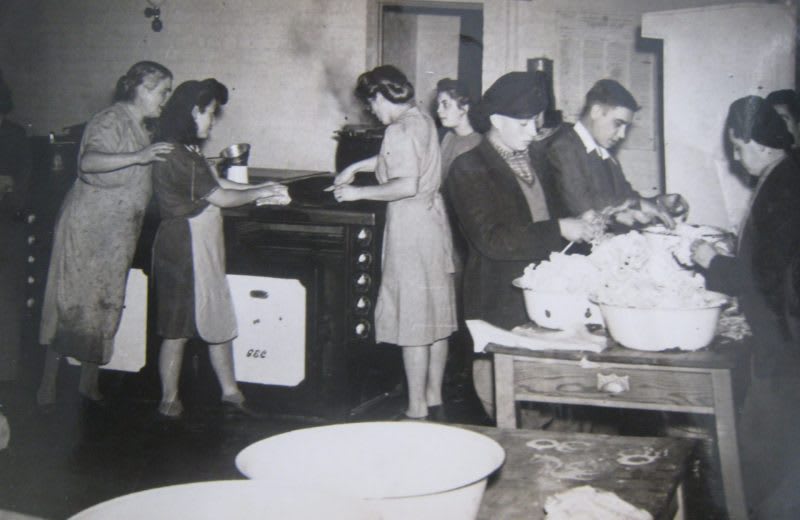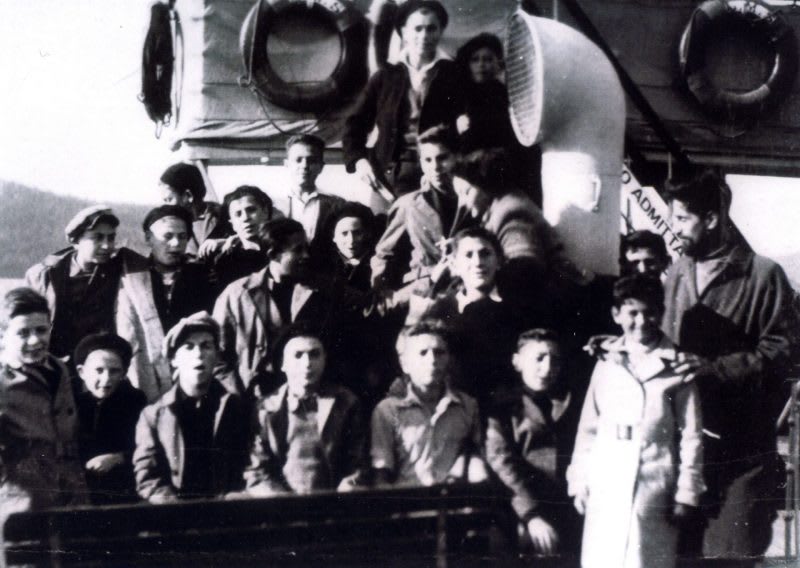Interview with After The War author Tom Palmer

Tom Palmer is the author of numerous books for children (and adults too). Not only has he written The Football Academy and Rugby Academy series, he is also behind the brilliant rebooted versions of the Roy of the Rovers books. He has written extensively about the past for a young audience and books such as Armistice Runner and D-Day Dog have taught children about the events of the First and Second World Wars.
His latest book, After The War, shares some of the stories of the three hundred Jewish children who were brought to the Lake District after surviving the horrors of the Nazi concentration camps. This beautiful piece of historical fiction has been very carefully constructed from the accounts of those survivors and Tom’s extensive research into the events of the war. Young readers will learn not only about what happened to those children before they arrived at Windermere but also of the terrible experiences that changed their lives. The book vividly portrays a very difficult part of history and enables readers to empathise with the emotions of the main protagonists seventy-five years after the events which it recounts. It’s such a moving, hope-filled story that parts of it will remain with me for a very long time (I’m not going to give you any spoilers here though!). It’s a perfect introduction into the significance of oral histories and the importance of keeping history alive for following generations.
Tom very kindly agreed to talk to me about the importance of carefully researching the past and the resources he used to bring this story to life.

Tom, how did you first become aware of the Lake District Holocaust Project and the history behind it?
My wife heard the story of the Windermere Boys on Radio 4’s Open Country (you can listen to that episode here) and said I had to listen to it. Although I had been to Windermere countless times as a child, then as a father, I had never heard of the story. This was a story about orphan child refugees who had survived the worst events you could possibly imagine and come to one of my favourite places to try to begin a new chapter in their lives. I had never come across anything like it.
This isn’t the first book for which you have carried out detailed historical research. How did the process of finding out about the children who came to stay at Windermere differ from your earlier books?
After the War was very different. In Over the Line, Armistice Runner and D-Day Dog I had used any sources I could get my hands on. Museums. Books. Films. Audio recordings. Records at the Imperial War Museum. Casting my net far and wide to get the best stories I could to use in those books. In After the War I used a relatively small amount of primary sources relating only to the Boys. Largely interviews and conversations with the survivors and the expertise of Trevor Avery, who heads up the Lake District Holocaust Project. As a result every scene is based firmly on the testimony of one of the survivors. Trevor Avery was my guide in this. He had years of experience as a Holocaust historian. He had strong relationships with the surviving Boys and their families. So, as well as drawing all my material from his work on the Boys, I ran every scene and idea past him too.
Are the main characters, Yossi, Leo and Mordecai, based on real people?
They began loosely based on three of the Boys that I had met, seen speak or listened to. But they are composite characters. Yossi remembers how his father had bicycle tyres with ‘Made in England’ moulded into them. He also remembers the confusion around the last time he saw his father. Those events happened to two different Boys. So, although I have blended the stories of several of the Boys, they are, again, all based on testimony.

When you began the research for After The War, what primary sources did you use to uncover the history behind your story?
The recordings on the Lake District Holocaust Project website, then meeting the Boys in person, as well as speaking to Trevor Avery, who gave me generous access to photographs and other material in their archives. I visited several museums in the UK and Holland to see and read their artefacts, notably the Imperial War Museum and the National Holocaust Centre in Nottinghamshire. As well as former concentration camps in Poland and the Czech Republic. Also, the pages of the Westmorland Gazette from 1945.
I’m interested to know more about the different forms of evidence that you used and how oral records, written records, and objects influenced the way you told the story.
The photographs and the exhibition at the Lake District Holocaust Project were a starting point, enhanced by the material I mentioned above. But it was the hours of interviews with the Boys that formed almost all of my evidence. My other main source was Joyce. There is a young English girl in After the War called Joyce. I met her – seventy-five years later – at an event at the Lake District Holocaust Museum at Windermere Library. She and her niece – who both used to live on the Calgarth Estate, where the Boys came to stay – have shared some of their family’s memories that played a huge part in the book.

What surprised you the most in the course of your research?
That – even though I had read some books and watched certain films about the Holocaust – I understood very little about what and why and how it had happened.
The book describes three different stages of the children’s lives: before the war, during the war, and their time in the Lake District. How did you approach researching each of these different time periods and what the boys worlds were like at those times?
It is a great question. One of the things that was stressed early to me when I began work on After the War was to see the Jewish people and communities who were so ruthlessly persecuted by the Nazis beyond what was done to them in the 1930s and 40s. That it was vital to portray what the Boys’ lives were like before the war. Their families. The centuries-old Jewish culture across Europe that the Nazis tried to wipe out. So I read books and watched films and listened very carefully to the Boys’ memories of their home lives before 1939, to make sure I included that in the book. I hope I have done that some justice. I wish I could have gone on to write more about the Boys’ lives after the war, after Windermere. Some moved abroad, but many went on to settle in the UK, rearing families, running businesses and one – Ben Helfgott – went on to win gold medals for Great Britain in the Olympic Games.

Why do you think it’s important to write historical novels for children?
The regular answer is to teach children about the mistakes of the past so that their generation don’t make the same mistakes in the future. And there is some truth in that. But, really, I think children really want to know about the past. About how people lived. And died. I think they find it fascinating and quiet shocking how we are so like – and so different – to how people were 10 or 1000 years ago. The bottom line here is that history is fascinating because it is both believable and unbelievable at the same time.
Do you have any advice for young people who want to write? And particularly those who want to write about history?
The bottom line is to write about what you are interested, at least at the beginning. You can draw such confidence writing about something you enjoy talking and thinking about. It makes it less difficult. And that could be history if that is your thing.
If a reader were to write their own story about the past, where would you tell them to start their own research process?
Start with primary sources then you can develop your story from scratch and find your own way in, especially through your characters. I began After the War with the testimonies on the Lake District Holocaust website, but a wonderful place to begin any history writing project is the Imperial War Museums online archive, certainly for the 20th Century. There are tens of thousands of hours of interviews and photographs and film footage, all searchable by keywords. It’s amazing and you can find it here.
Tom, thank you so much for your time and congratulations on your beautiful book.
After The War is published by Barrington Stoke and is released on 6 August 2020. You can find it in all good book stores and Tom is donating 10% of his royalties to The Lake District Holocaust Project.
The website for The Lake District Holocaust Project tells the incredible story of the Windermere Boys’ and you can listen to recording of their experiences.
You can find out more about Tom Palmer, his books and their accompanying resources at www.tompalmer.co.uk. You can also watch five short films about researching and writing After The War on his YouTube channel.
